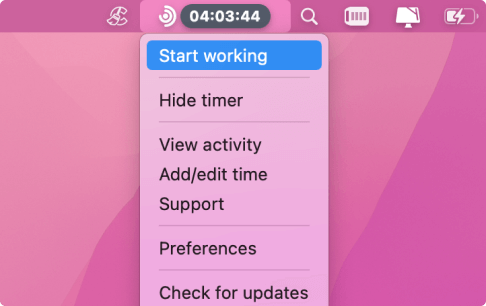Want to improve your productivity? Learn how to measure it, understand its types, and leverage technology for better results. This guide provides actionable tips to help you perform better and get more done.
Key Takeaways
- Productivity encompasses various forms, from individual efforts to national economic performance, and is essential for economic growth and competitiveness.
- Measuring productivity accurately through labor productivity, multi-factor productivity, and partial productivity helps identify areas for improvement and informs strategies to enhance efficiency.
- Factors such as work environment, technological advances, and employee engagement significantly influence productivity levels and play a critical role in achieving economic growth.
Understanding Productivity

Productivity is a multifaceted concept that spans from individual efforts to national economic performance. At its core, productivity is about achieving more output with the same or fewer inputs, making it a critical factor in economic growth and competitiveness. Understanding individual productivity in its various forms helps clarify how personal efforts can scale up to impact broader economic outcomes.
Emphasizing positive productivity over toxic productivity ensures that efforts lead to sustainable and effective performance without burnout through deep work and energy.
Defining productivity
Productivity is fundamentally a measure of performance, comparing output to input across various contexts. In the workplace, it refers to the amount of work done over a specific period, often quantified as revenue divided by hours worked.
On a national level, it measures how effectively labor and materials are converted into goods and services. Capital productivity, which assesses how well physical capital generates output, and material productivity, which measures output per unit of material consumed, are also essential for economic assessments.
Understanding these definitions provides a comprehensive view of productivity’s role in different settings.
Types of productivity
Different types of productivity provide insights into various aspects of efficiency. Labor productivity measures how efficiently labor is used to produce goods and services, often assessed in terms of output per hour worked. Total factor productivity (TFP) looks at growth in output not explained by labor or capital increases, providing a broader perspective on economic performance.
Partial productivity focuses on specific inputs like labor or materials, offering targeted insights into production efficiencies. These types help us understand productivity from different angles, contributing to a holistic view of economic productivity.
Importance of productivity
Productivity is crucial for economic growth and improved living standards. Higher productivity allows economies to produce more goods and services with the same resources, leading to better living standards. For businesses, maximizing productivity without sacrificing product quality is an overarching goal, as it directly impacts customer service and competitiveness.
On a national level, investments in innovation, education, and infrastructure significantly influence productivity, driving economic performance and growth. Hence, productivity is a key indicator of economic health and a driver of progress.
Measuring Productivity

Measuring productivity accurately is essential for understanding and improving it. Various productivity measures help track efficiency at different levels, from individual workers to national economies. Labor productivity, multi-factor productivity, and partial productivity each offer unique insights into how resources are utilized.
These measures allow businesses and policymakers to identify areas for improvement and implement strategies to boost productivity growth, supporting overall economic performance.
Labor productivity
Labor productivity is a key measure of economic performance, defined as the ratio of gross domestic product to total hours worked. It can be calculated using GDP per worker or by dividing total revenue by total hours worked. This measure is crucial for evaluating labor force contributions to economic output and understanding trends in job growth, real wages, technological advances, and labor statistics.
The U.S. government, for example, focuses on labor productivity as a primary indicator of economic health. Analyzing labor productivity allows businesses to optimize operations and boost employee efficiency, according to the Bureau of Labor Statistics.
Multi-factor productivity
Multi-factor productivity (MFP) provides a broader perspective by comparing goods and services produced to combined inputs like labor and capital. Total factor productivity (TFP), a type of MFP, measures output growth not attributed to capital and labor accumulation, capturing the residual growth unexplained by these inputs.
Understanding MFP is crucial for assessing the efficiency of multiple input factors in production processes, offering insights into how well resources are utilized beyond just labor and capital.
Partial productivity
Partial productivity measures focus on specific inputs, providing targeted insights into productivity development and input efficiency that are measured over time. These measures have evolved from manual tracking to sophisticated computerized data collection, allowing for more accurate and timely analysis.
Focusing on individual inputs such as labor or capital helps businesses pinpoint areas for improvement and implement strategies to boost overall productivity. Understanding partial productivity helps organizations track productivity effectively and make data-driven decisions.
Factors Influencing Productivity
Various factors influence productivity, from the work environment to technological advances and employee engagement. Countries that prioritize education and technology often achieve significant productivity growth and improve the country’s productivity, as seen in Germany and South Korea.
Workplace factors such as management quality, compensation, and training also play crucial roles in affect productivity. Understanding these factors enables businesses and policymakers to implement strategies that enhance productivity and drive economic growth.
Work environment
The work environment significantly impacts employee productivity, encompassing elements like management styles, company culture, and communication. Key aspects of an effective work environment include comfortable furniture, appropriate lighting, and overall workspace comfort, which enhance employee well-being and productivity.
Additionally, factors such as psychological safety, sleep quality, and leisure time are crucial for maintaining high productivity levels. Addressing common obstacles like workplace distractions and burnout can further improve the work environment and boost productivity.
Technological advances
Technological advances are among the largest drivers of productivity growth. Adopting new, user-friendly technologies can greatly enhance employee efficiency and reduce frustration. Tools such as sales enablement, project management, and collaboration platforms can significantly improve team productivity by streamlining workflows and enhancing communication.
Employee engagement
Employee engagement is essential for enhancing productivity in any organization. Motivated and inspired employees are more productive, and providing regular feedback and recognition helps maintain high levels of motivation. Offering career development opportunities can significantly boost employee morale and engagement, leading to improved productivity.
Fostering a positive work environment and actively engaging employees enables organizations to achieve substantial productivity gains and improve overall economic performance.
Strategies to Improve Productivity

Improving productivity requires well-defined systems and processes that enable employees to work efficiently and perform their best work. Organizations need to rapidly adopt technology and efficiently redeploy worker time through resource reallocation to achieve a boost in labor productivity.
Implementing effective strategies at both personal and company level and organizational levels significantly enhances productivity and drives economic growth.
Personal productivity tips
Enhancing personal productivity starts with defining clear goals to know how to stay on track and accomplish more effectively, but not everything will go as planned. Creating a to-do list helps focus on overarching goals and boosts motivation.
Scheduling tasks based on peak productivity times can lead to better outcomes, and techniques like the Pomodoro Technique remind individuals to take necessary breaks. Tracking daily activities and reflecting on output quality helps uncover productivity patterns and improve focus.
Leveraging technology
Leveraging technology is essential for optimizing processes and achieving better productivity outcomes. Implementing technology can help organizations focus on eliminating waste, resulting in improved efficiency and productivity. The Toyota production process is an excellent example of integrating technology for operational efficiency, emphasizing waste elimination.
By adopting new technologies, companies can significantly streamline workflows and enhance overall productivity.
Benefits of Enhanced Productivity

Enhanced productivity offers numerous benefits, including increased profits, better work-life balance, and economic growth. Productivity is considered a key source of economic growth, often leading to strategic policy measures that increase productivity and investments that enhance overall productivity, providing more value.
By improving productivity across sectors, businesses and economies can achieve higher living standards and sustainable growth in the global economy.
Increased profits
Productivity growth is directly linked to corporate profits, meaning that as productivity increases, profits tend to rise as well. Higher productivity allows businesses to increase the income generated per unit of input, significantly boosting their financial performance. This helps businesses meet their obligations to workers, shareholders, and governments, enhancing their overall competitiveness in the market.
A productive workplace can also enhance a company’s reputation, leading to increased customer trust and business growth.
Better work-life balance
Improvements in productivity can lead to reduced employee stress, allowing for a healthier work-life balance. Productivity enhancements often result in employees feeling more empowered to unplug from work after hours. Excessive workloads without adequate breaks can lead to burnout, diminishing overall productivity and employee morale.
Promoting sustainable work practices enables employees to achieve a better balance between work and personal life.
Economic growth
Productivity growth is a vital driver of improvements in living standards and economic expansion. Higher productivity can lead to cost savings, which in turn fosters economic stability and growth. Labor productivity influences economic and wage growth, making it a key factor in overall economic performance.
Total factor productivity indicates the contribution to economic growth by innovations, highlighting the importance of continuous improvement and technological advancement.
Real-World Examples of High Productivity

Real-world examples of high productivity provide valuable insights into effective strategies and practices. Countries like India aim to create millions of jobs and achieve significant economic milestones by focusing on productivity growth.
Highlighting successful cases like these helps illustrate the practical applications of productivity principles and their impact on economic performance.
Toyota Production System
Toyota is a prime example of high productivity in the real world, thanks to the Toyota Production System (TPS). TPS integrates technology for operational efficiency, emphasizing waste elimination and continuous improvement. This system has enabled Toyota to achieve significant productivity gains, serving as a model for other organizations aiming to enhance their productivity.
National productivity success stories
Countries that showcase high productivity levels include:
- Luxembourg, which consistently ranks high in GDP per hour worked, highlighting its efficiency.
- Norway, which benefits from substantial investments in technology and a skilled workforce.
- Ireland, whose favorable corporate tax policies have attracted global businesses, contributing to its remarkable productivity growth.
These examples demonstrate that prioritizing innovation, technology, and supportive policies can significantly impact national productivity and economic performance.
Common Challenges to Productivity
Productivity growth faces several challenges, including workplace distractions, resistance to change, and burnout. Since the 2008 financial crisis, labor productivity growth in advanced economies has slowed, impacting overall economic performance and contributing to low productivity. Addressing these challenges is crucial for enhancing productivity and supporting economic growth.
Understanding and mitigating these obstacles allows businesses to implement effective strategies to boost productivity.
Workplace distractions
Workplace distractions are a significant barrier to productivity. Common distractions include personal calls, texting, interruptions from colleagues, and noise. It typically takes over 23 minutes to refocus after being interrupted, leading to substantial productivity loss throughout the day.
Multitasking also contributes to decreased productivity as employees switch focus between tasks. Establishing designated quiet zones and implementing ‘do not disturb’ signals can help reduce distractions and improve focus. Multitasking also contributes to decreased productivity as employees switch focus between tasks.
Resistance to change
Resistance to change is a common challenge when introducing new technologies and processes. Employees may resist new technologies due to fear of the unknown or discomfort with altering established practices. This resistance often stems from fears about job security and uncertainty regarding new processes. Understanding the root causes of resistance is critical for managing transitions effectively and improving employee buy-in.
Implementing open communication and providing training can help mitigate fears and enhance acceptance of new technologies.
Burnout and overwork
Burnout and overwork are significant challenges that negatively impact productivity. Burnout is characterized by emotional exhaustion, depersonalization, and a diminished sense of personal accomplishment, often resulting from prolonged stress and excessive workloads without sufficient recovery time. Overwork can lead to decreased productivity, poor health outcomes, and increased employee turnover.
Promoting sustainable work practices, such as implementing regular breaks and reasonable work hours, can help mitigate burnout and improve worker productivity.
Summary
In summary, productivity is a multifaceted concept that significantly impacts individual, organizational, and national performance. Understanding and measuring productivity accurately, recognizing the factors that influence it, and implementing effective strategies to improve it are crucial for achieving productivity gains. Enhanced productivity leads to increased profits, a better work-life balance, and economic growth. By addressing common challenges and leveraging real-world examples, businesses and economies can unlock their full potential. Embrace the journey of productivity improvement and witness the transformative impact it can have on your life and organization.
Frequently Asked Questions
What is productivity, and why is it important?
Productivity is the ratio of output to input, reflecting performance efficiency. Its importance lies in driving economic growth, enhancing competitiveness, and elevating living standards.
How can productivity be measured?
Productivity can be effectively measured using labor productivity, multi-factor productivity, and partial productivity, as each offers distinct insights into efficiency. This multifaceted approach allows for a comprehensive evaluation of how resources are utilized.
What factors influence productivity?
Productivity is significantly influenced by the work environment, technological advancements, and employee engagement. Focusing on these elements can greatly enhance overall efficiency and effectiveness in any organization.
What strategies can improve productivity?
Defining clear goals and leveraging technology are effective strategies to improve productivity, as they help streamline processes and enhance employee engagement. Creating a positive work environment further boosts morale and efficiency.
What are the benefits of enhanced productivity?
Enhanced productivity results in increased profits and fosters a better work-life balance, ultimately contributing to economic growth. This advancement not only benefits businesses but also enhances the overall well-being of employees and society.

